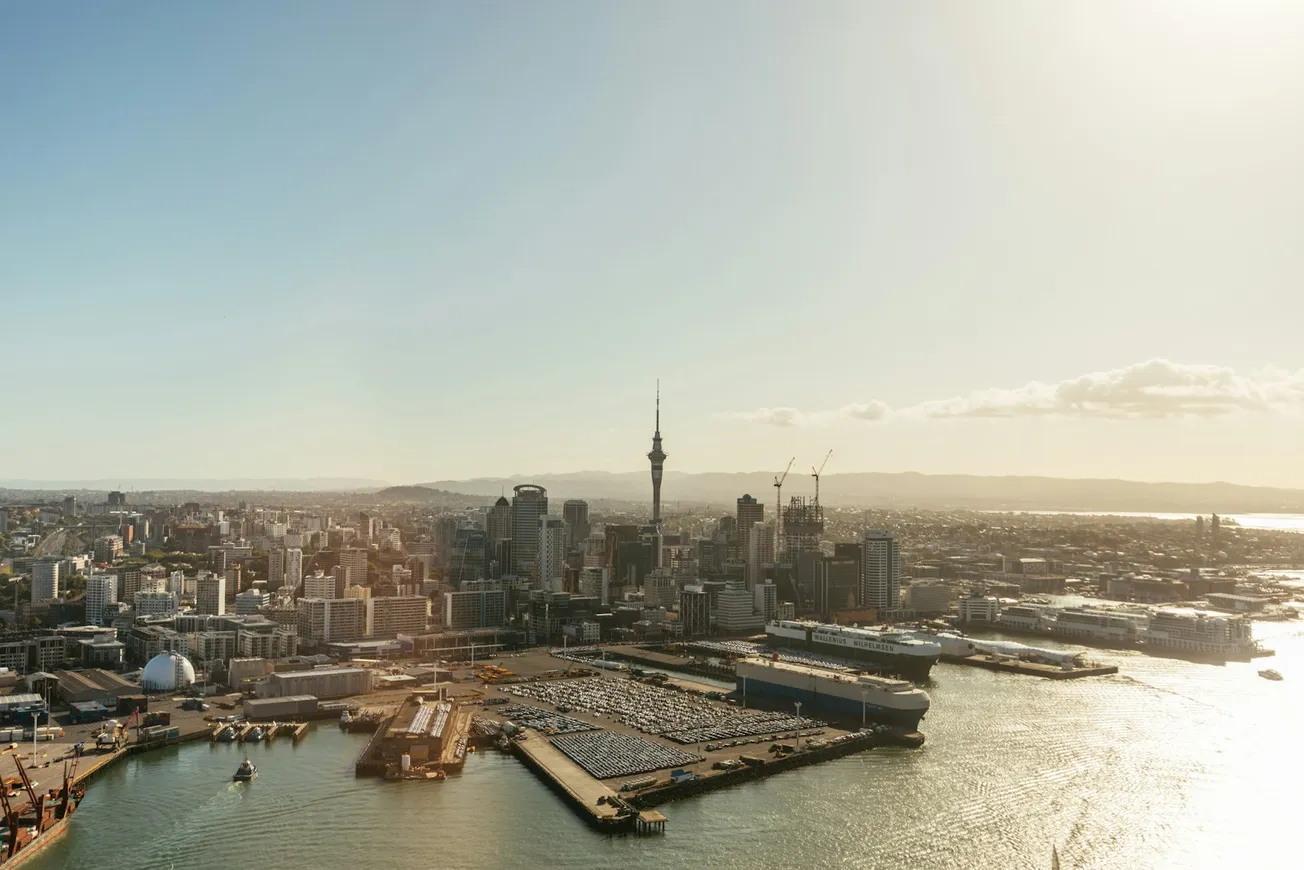Table of Contents
Michael Bassett
Political historian Michael Bassett CNZM is the author of 15 books, was a regular columnist for the Fairfax newspapers and a former Minister in the 1984-1990 governments
Beware of ministers and mayors with simple solutions to any city’s problems! A series of snake-oil salesmen have almost extinguished the heart of Auckland City. The announcement that the last department store on Queen Street, Smith and Caughey, is closing its doors after 144 years of trading, can largely be traced back to relatively recent decisions this last fifteen years by fantasists with a single issue aimed at brightening New Zealand’s biggest city.
First, we had One Big City in 2010 accompanied by council-controlled organisations (CCOs) which aren’t council-controlled and are answerable, in practice, to no one at the ballot box. Auckland Transport (AT) lives a life of its own, closes roads, litters the city with orange cones, installs speed bumps, alters kerbs and pedestrian crossings, puts in cycleways that are mostly unused, and tells Aucklanders they can like them or lump it.
Then we had Len Brown, the first super city mayor, who became obsessed with the need for the City Rail Link (CRL) that is to travel from Britomart to Mt Eden, with stops in Albert St, and Karangahape Rd. First predicted to cost $2.8 billion, revised to $4.4 billion by the time the documents were signed, now calculated at $5.6 billion, and certain to weigh in at more than $6 billion by the time all the bills are paid. Albert Street that runs parallel with Queen Street has almost been destroyed during CRL’s construction, and lots of retailers have lost their livelihoods. Victoria and Wellesley Streets have been closed off and on, to the detriment of retailing and traffic, causing many Aucklanders to shun the city centre. Foot traffic in the central city steadily declined. The date for completion of the project is now two years later than was initially sold to Aucklanders, few of whom ever showed much enthusiasm for the project anyway.
From 2016 Auckland laboured under Phil Goff’s council. It decided to play games with Queen Street itself. All kerb-side parking was removed, bus stops were no longer indented, footpaths were widened and the thoroughfare was narrowed to two lanes. From the Civic Theatre to the Town Hall was closed to private cars. Hefty fines are levied on those who transgress. Many fewer cars now come to Queen Street, and there has been a bigger drop in foot traffic in the most important retail street in the country. It wasn’t long before “For Lease” signs started appearing on shop windows. Bus stops for the Outer Link bus are no longer near Queen Street. People climb steep slopes to outside AUT or near to the Casino. The Mid Town car park has become a dangerous place to visit. Young hoodlums hang around a vast gloomy derelict building snatching handbags. Doorways in the dead part of Queen St above the Civic are havens for rough sleepers, and at 11 am on a week day I saw a guy piddling on a door step. All this, less than 100 metres away from Smith and Caughey’s front doors!
At the same time as the new city’s first two Labour mayors were engaged in their handiwork, the Labour Government in Wellington was spending hundreds of millions scoping a city-to-airport rapid rail that would bring people into the heady delights of central Auckland. First costed at $14 billion, subsequent estimates thought it would be nearer $29 billion. Nobody, it seemed, was capable of seeing the wider picture of a crumbling inner city. Thank heavens for the Coalition government’s decision to axe the rapid rail; but central and local politicians had wasted hundreds of millions on consultants before sanity prevailed. Not a metre of actual construction was ever done. All of the above schemes were accompanied by pretty sketches showing smiling citizens strolling under trees, or chatting on benches with their toes almost on the train tracks. Remember them?
I’ve travelled a lot in my life, and have seen some appalling slums overseas. I never thought that Queen Street would become one. I have happy memories of visits to Queen Street’s department stores; as a little shaver, John Court’s with its tea rooms, and Milne and Choyce to buy my first suit. Whitcombe and Tombs’ bookstore and Hutchinson’s delicatessen where one got quality coffee beans. All of them gradually disappeared as shopping malls opened in the suburbs. First, Lynn Mall in 1963, then St Luke’s in 1969 followed by Takapuna, Newmarket and Sylvia Park. Auckland was altering gradually as the city expanded and everyone acquired a car. Being able to buy online reduced numbers needing to come to town.
But it has taken the arrival of the social engineers to put a near lethal dagger into the heart of Auckland city. Blinkered mayors and councillors, all claiming to be far-sighted, with a simple, costly “solution” to what ails the city. It’s too late now to wind back the CRL which is scheduled to open in 2026 (don’t hold your breath), and it would require considerable fortitude by Auckland Council to strip away the battlements that are strangling the sides of Queen Street. Legislative change to make Auckland Transport answerable to the public could be a lot easier. Maybe turning AT into a directly elected authority? After one term in power Auckland might start looking a friendlier place?
Beware, however. There are more single-issue fanatics lurking in Auckland’s undergrowth. For instance, the gang who think a huge, expensive underground stadium on the waterfront would transform the city. Or those who want to shift the port which, in one way, shape or form, employs nearly 30% of Aucklanders. Many advocates, of course, see dollar signs flashing for themselves. But when it comes to what is in the city’s best long-term interests they are just as blinkered as those I’ve mentioned. Give them all a wide berth.









